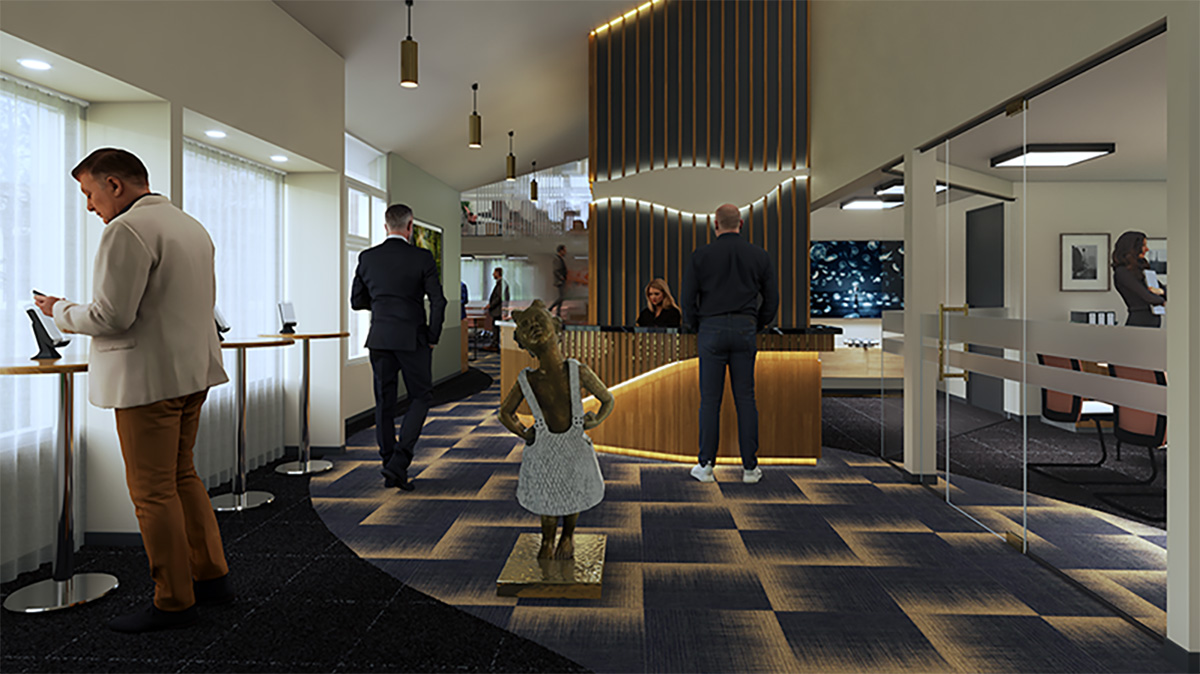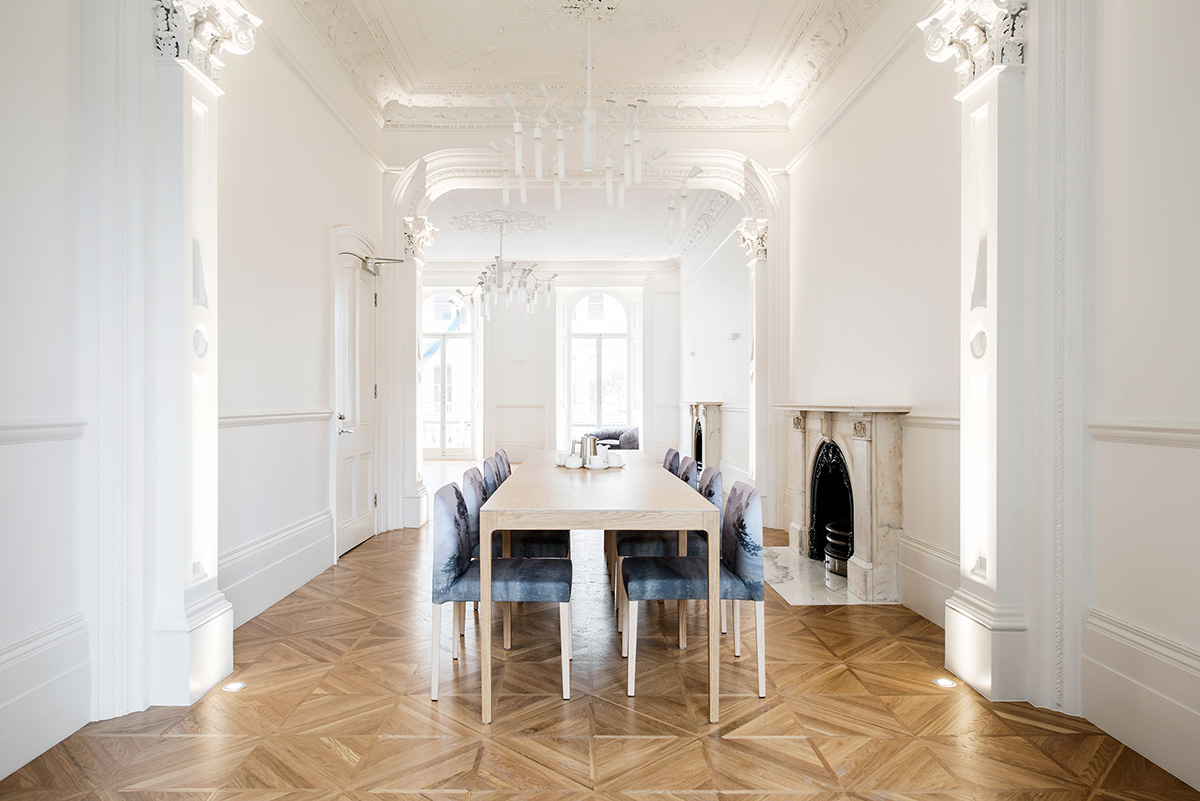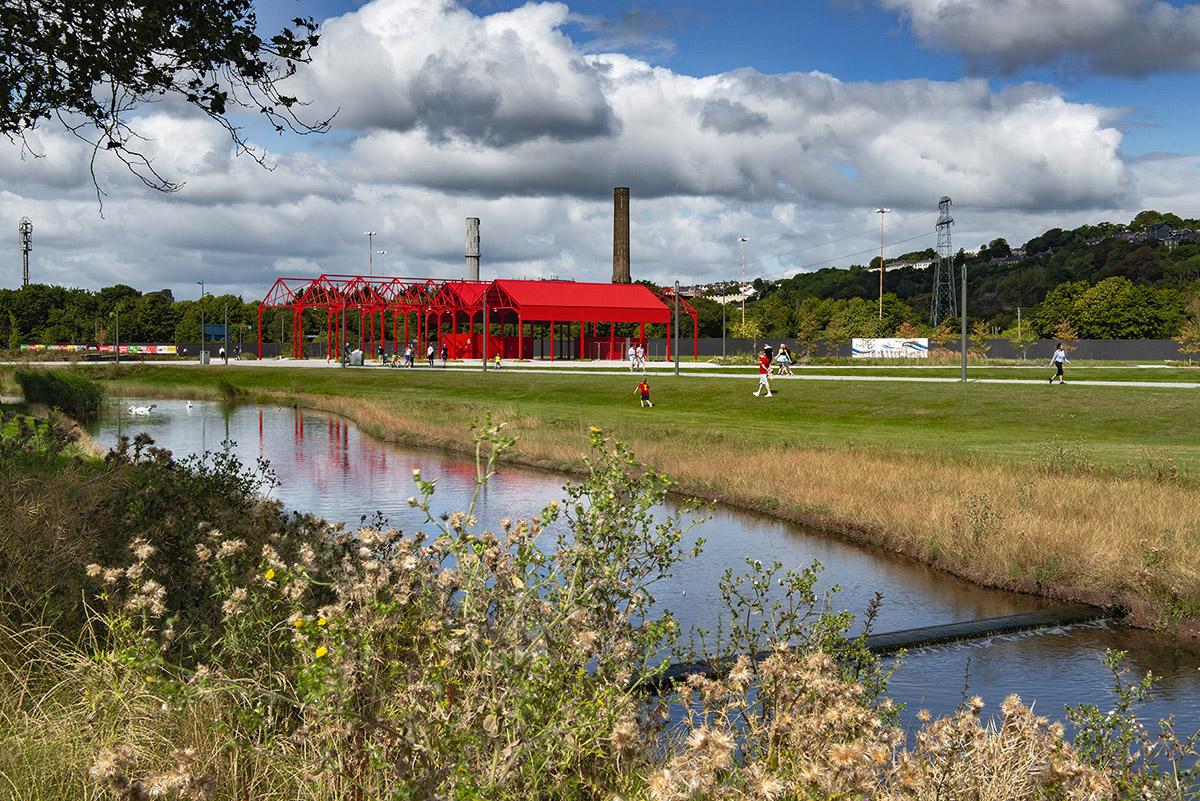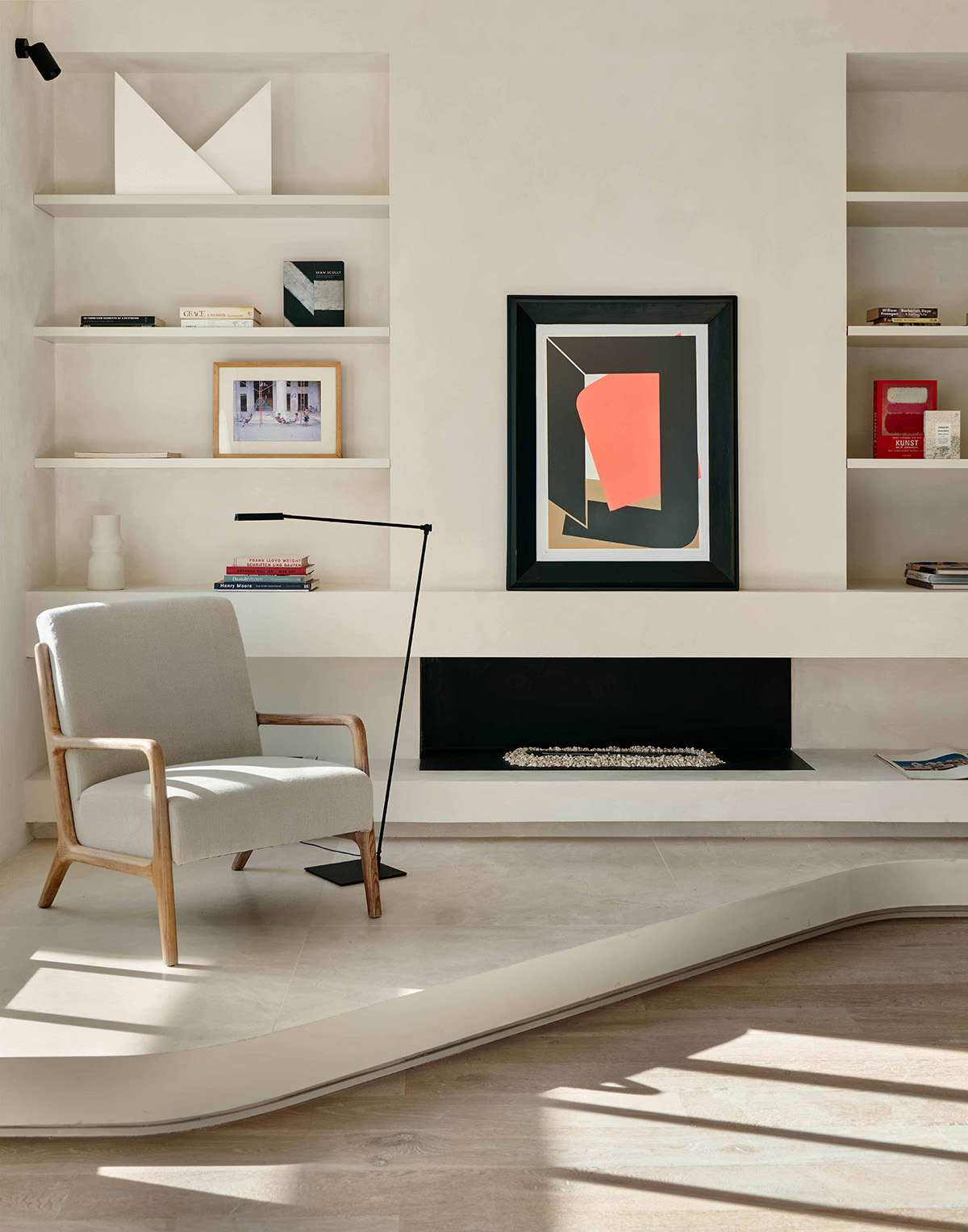ALT. – Urban transformations
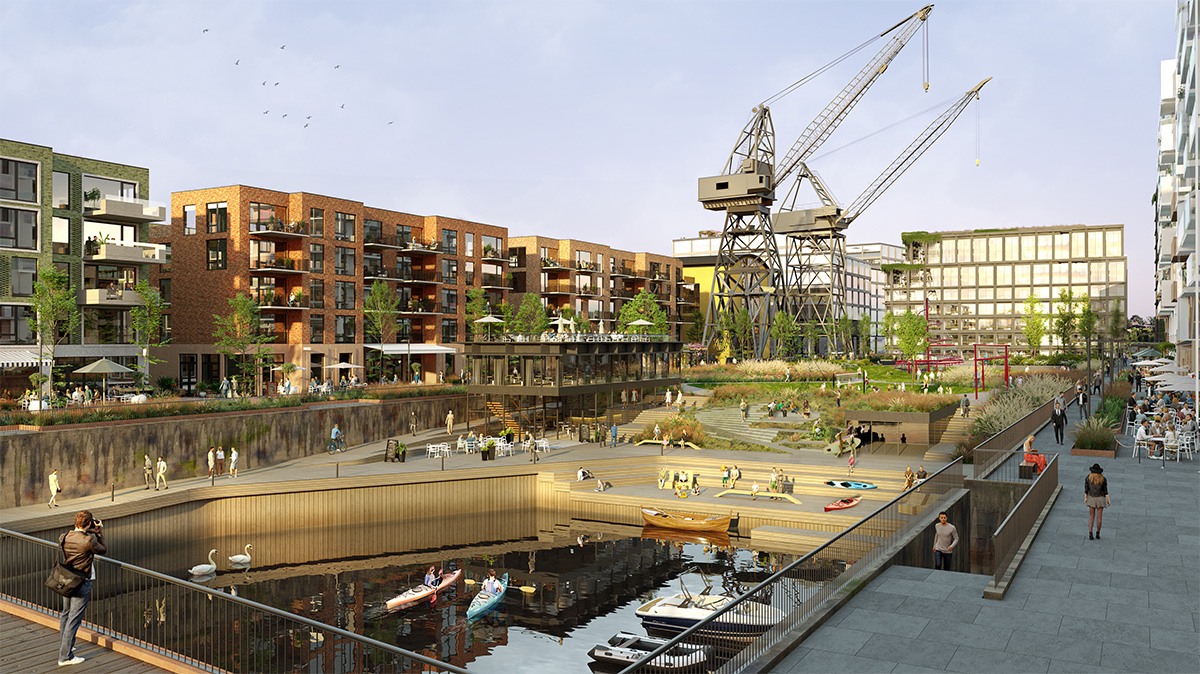
New use of an old dock. Photo: Ill 3destate and ALT.
Liveability is a priority when an old mechanical workshop and shipyard is being turned into a brand new, sustainable, living- and office quarter in the middle of a city. Fredrikstad is a typical example of a nationwide trend.
In many Norwegian cities along the coast, harbours and adjourning areas formerly reserved for logistics, military and marine industry, are being transformed. With much of the industry moved elsewhere, city councils are keen to make new use of these areas that often have a prime location, centrally placed yet facing the water.
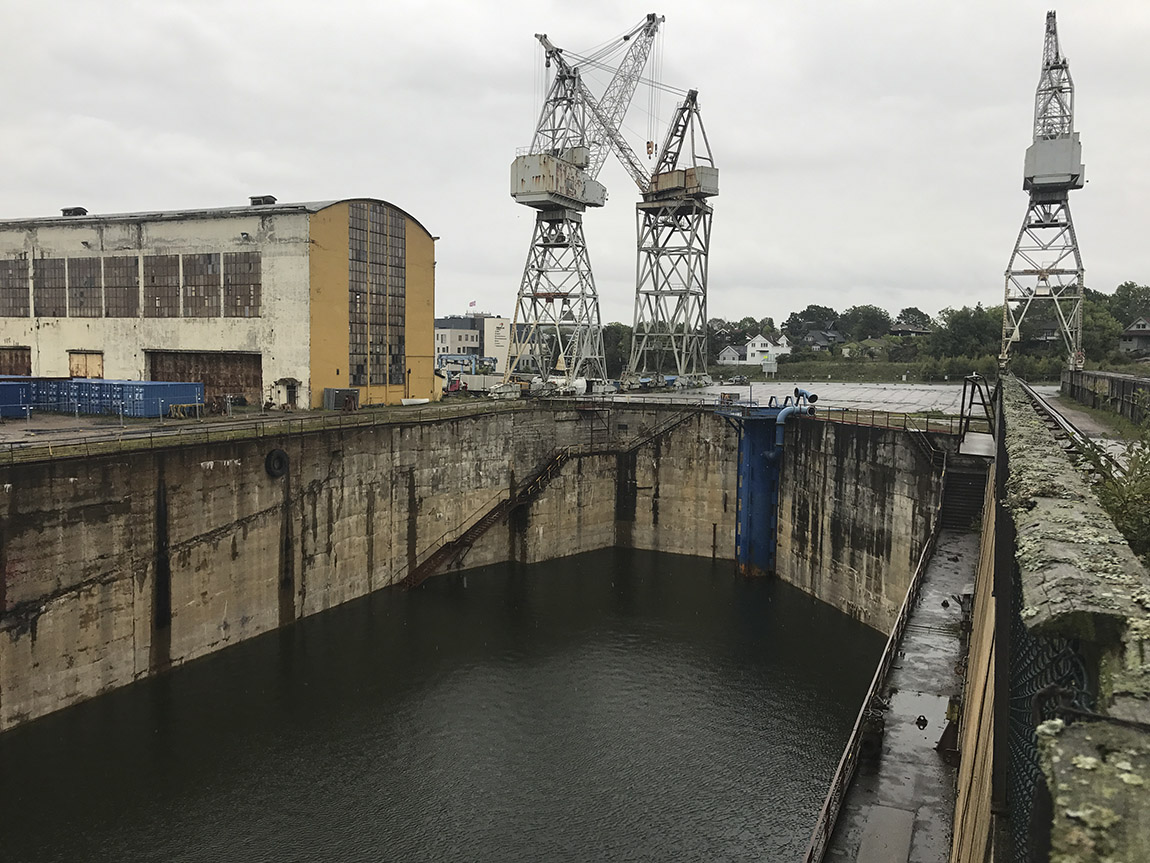
The large dry dock. Photo: Einar Lunøe, ALT.
A prime example is the transformation of Fredrikstad Mekaniske Verksted (FMV), which alt.arkitektur is turning into a brand-new city quarter. FMV used to be one of the largest shipyards in the country. Some 2500 people went to work here every day in the 70s, making FMV very much the pulse that kept Fredrikstad alive. The architects at alt. are treating that heritage with the utmost respect.
FMV was closed in 1987, but much of the structure is still there, including cranes and large mechanical halls. The area has been closed off for the city´s residents but is now to be rediscovered. Soon, all of this will be given new life – even the dry dock, 290 metres long, will be turned into a combined park with steps down to sea level, commercial areas and a parking structure and mobility centre, thereby helping to solve the area’s parking needs.
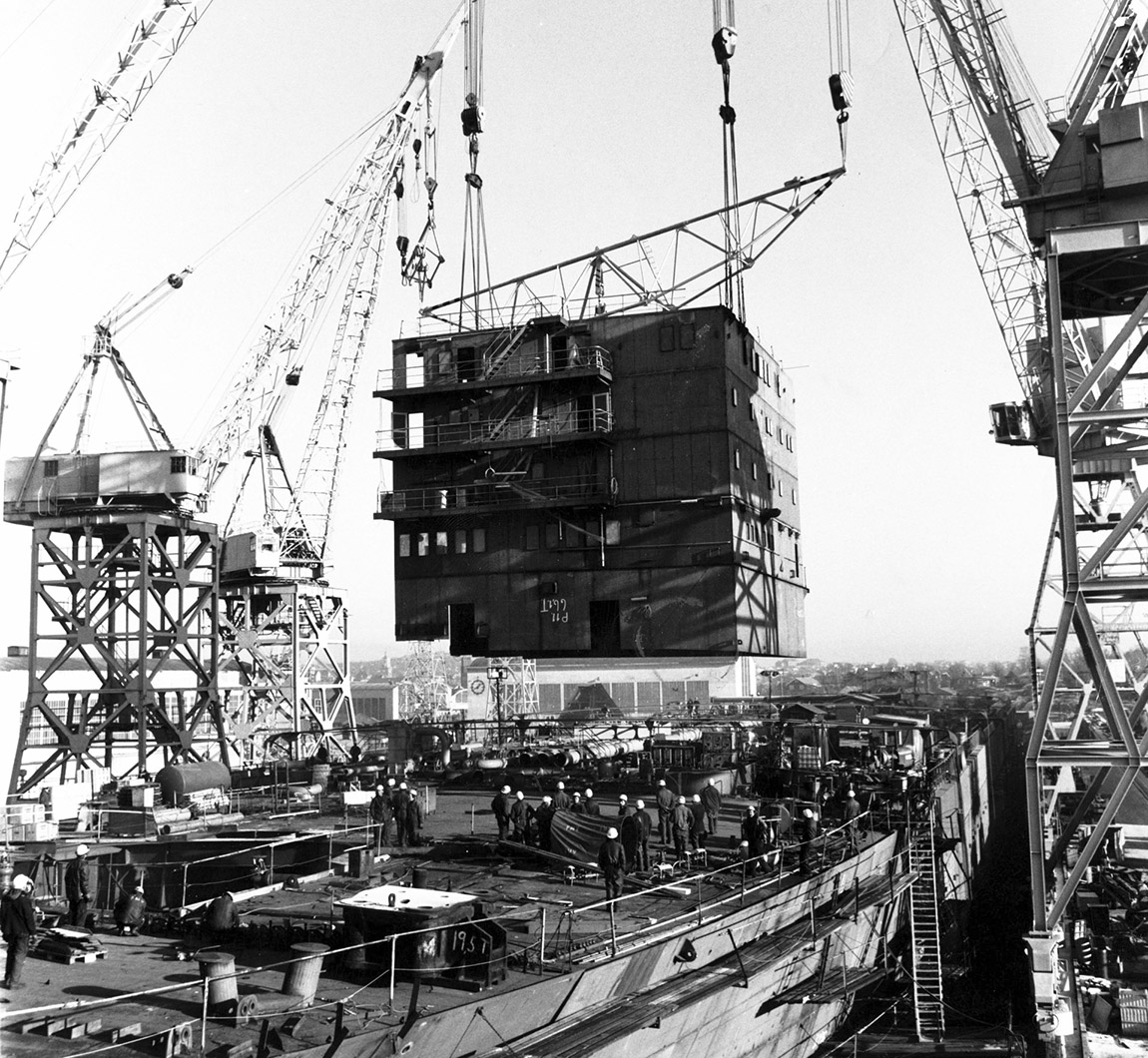
Naval construction in the dock. 1976.
A step-by-step process
Now, one of the challenges for transforming the area into a liveable community is to design a step-by-step process where history and new uses are integrated into the urban structure. These large structures are being used to create new urban spaces, while the industrial inheritance, which is very much a part of the city’s identity, is preserved. Along with new buildings, some of the old shipyard´s buildings will be used for co-working spaces, shops, cafés and art spaces. In the dock, there will also be a marina with a sauna and swimming pool. The temporary uses of the area will maintain the rough materiality and simple aesthetics of the shipyard areas.
To ensure that new buildings and areas are liveable and have a positive impact, architects at alt. make sure to involve everybody concerned with or affected by the construction, in the planning process. The aim is to collect and map all available information about the area to understand both the negative and the positive issues related to a building or an area.
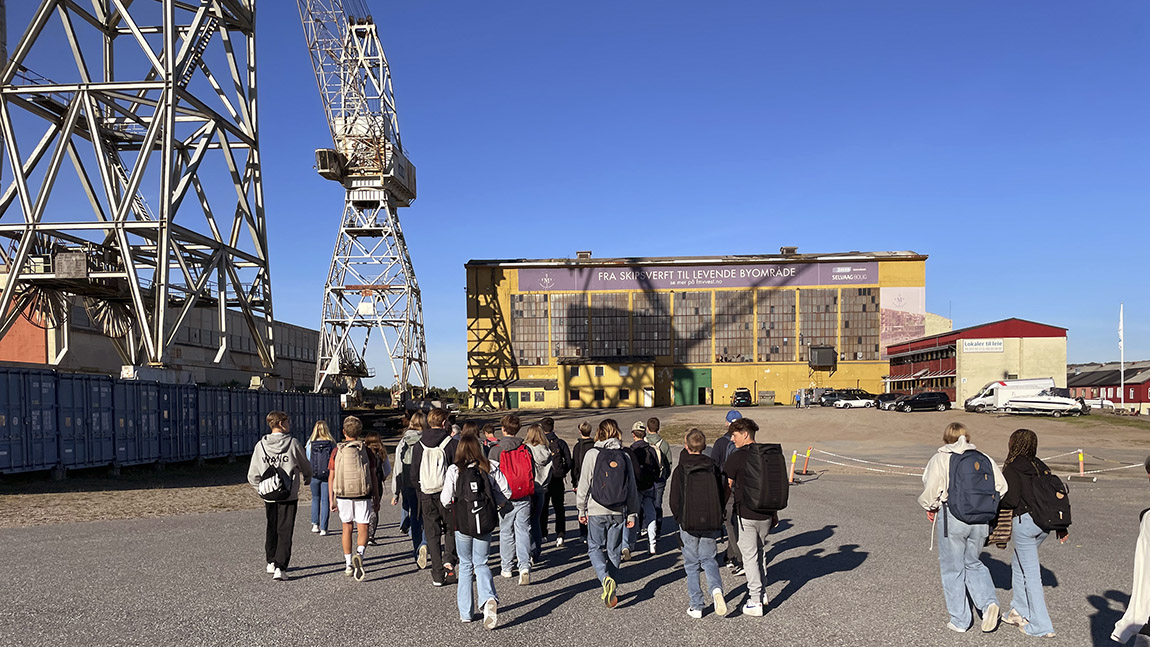
Local youth contribute to planning. Photo: Einar Lunøe, ALT.
Planning the city floor
To develop a vibrant urban area, a lot of attention should be given to planning the urban spaces and ground floors of buildings. This is not just a matter of designing artful solutions but of implementing careful studies of how urban areas are used. Which corners is it important to activate with a shop or café, what should be accessible outside the housing entrance, how can playgrounds contribute to urban spaces and still feel safe?
All elements should be considered to facilitate both recreation and practical needs, creating meeting spots that develop a social fabric among the inhabitants. A well-functioning neighbourhood will also be more attractive for visitors and establish a good framework for businesses in the area.
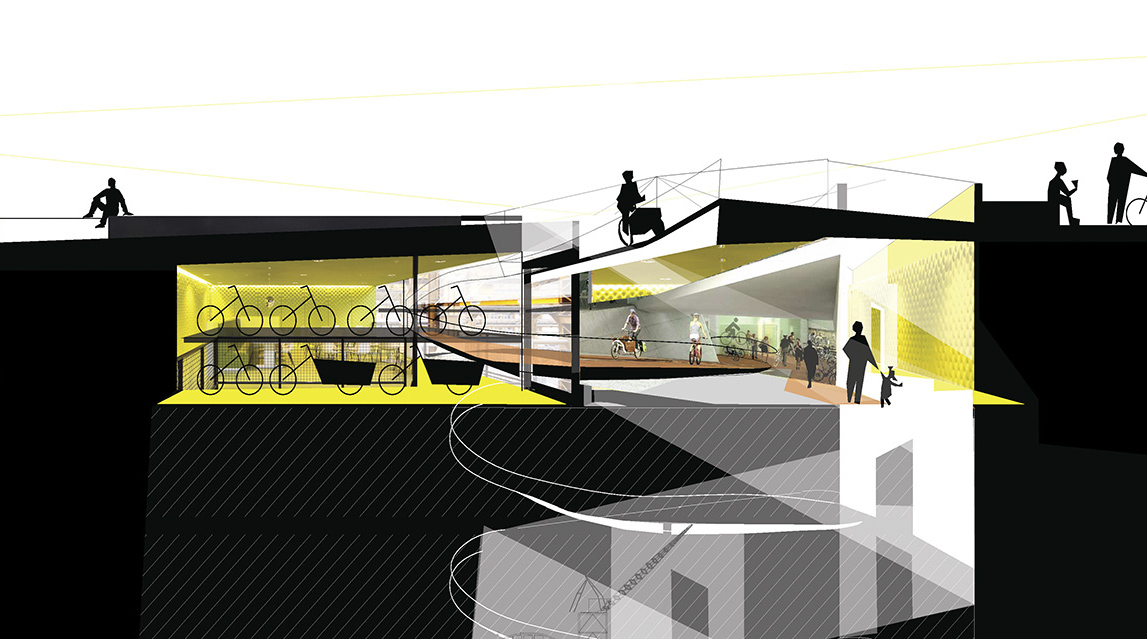
The bicycle department – Entry micromobility at the top flor in the dock, under the park. Photo: Ill. ALT.
Social aspects
Social aspects have become more important. There is more participation from neighbourhoods in planning processes, and more focus on how buildings and urban environments create spaces where people can gather. Through democratic and open workshops, alt. has identified relevant functions and clarified how the plan can support several aspects of sustainability. A separate project for temporary use – “Fredrikstad Temporary Workshop” – ensures it will also be attractive to use the area before it is fully developed.
Identity is made important through reusing and recycling of materials and buildings. It is focused on soft traffic; pedestrians and bicycles and creating areas free of cars. Moreover, even though it is an urban landscape, biodiversity is as much an issue as it is elsewhere.
In cities, it is even more important to create new and preserve existing green spaces. To increase liveability, climate change must be taken into account – so that parks and green spaces reduce damage from rainwater, as well as improve air and temperature in the city.
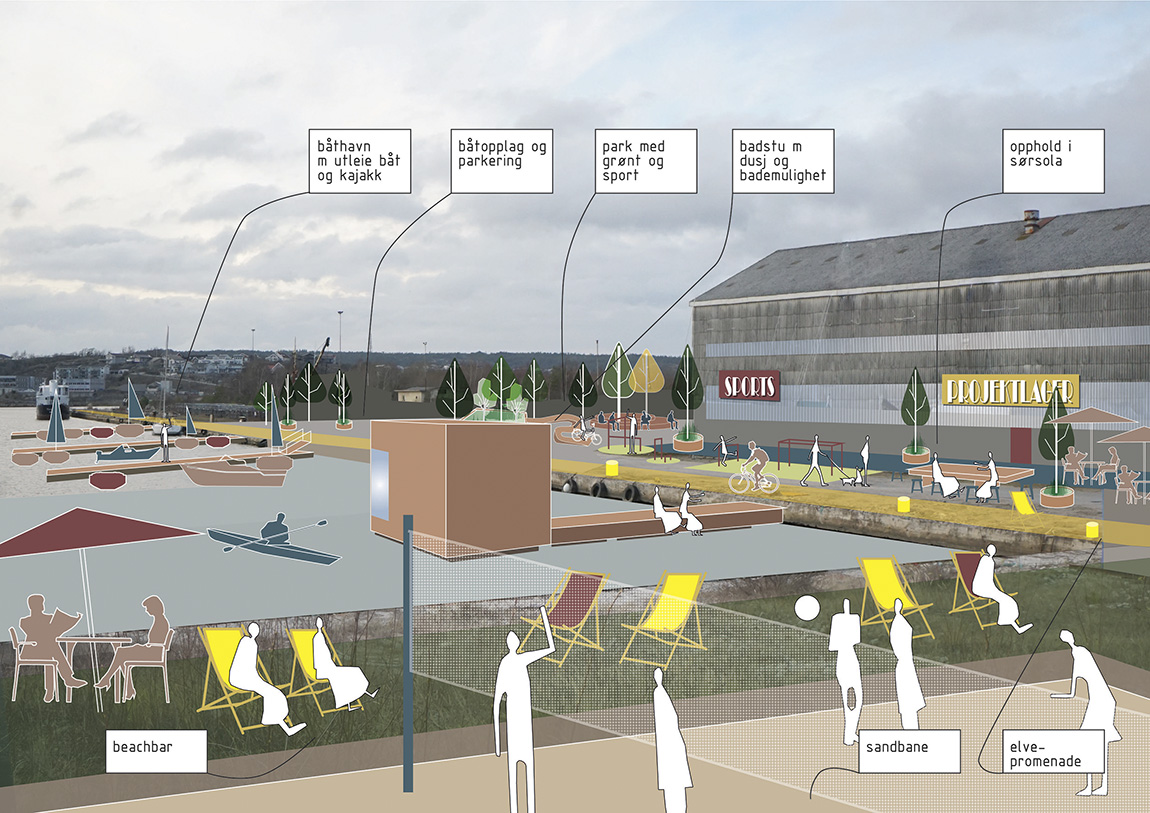
Temporary urban development_ALT. In collaboration with SOLA
Web: www.alt.as Facebook: Alt Arkitektur AS Instagram: @alt.arkitektur
Subscribe to Our Newsletter
Receive our monthly newsletter by email

